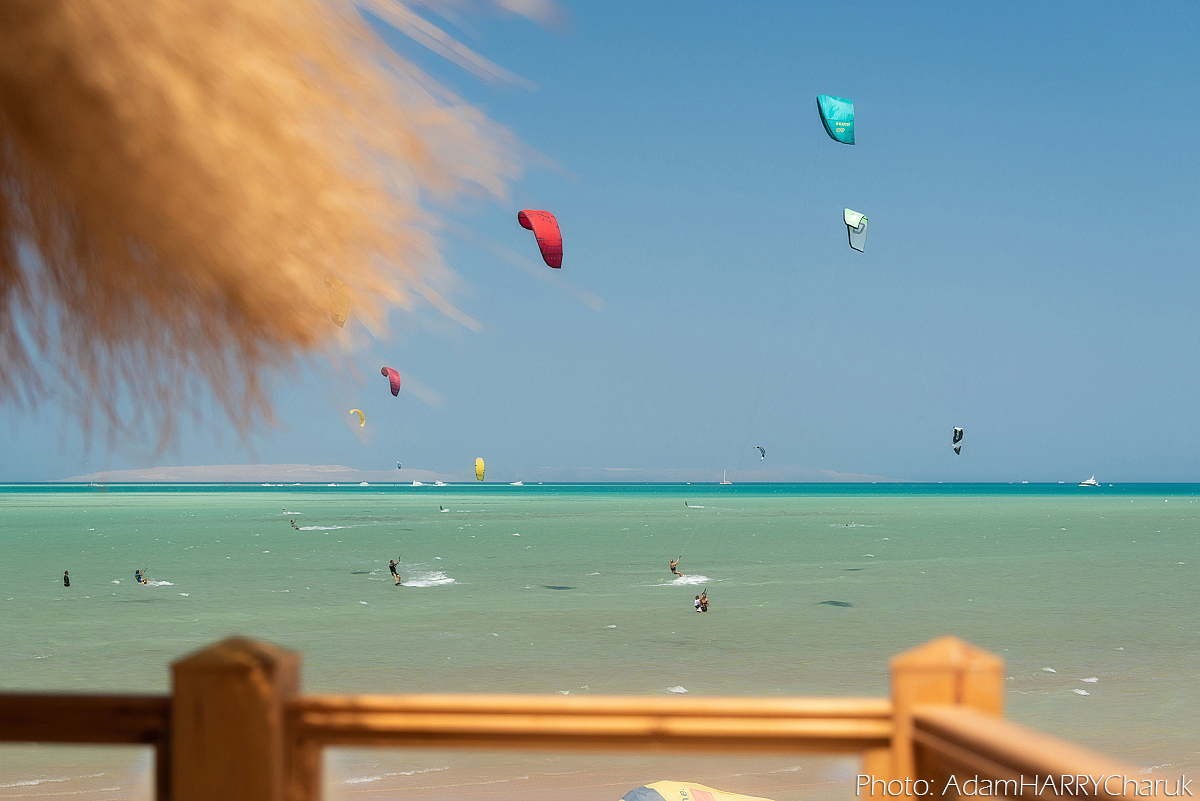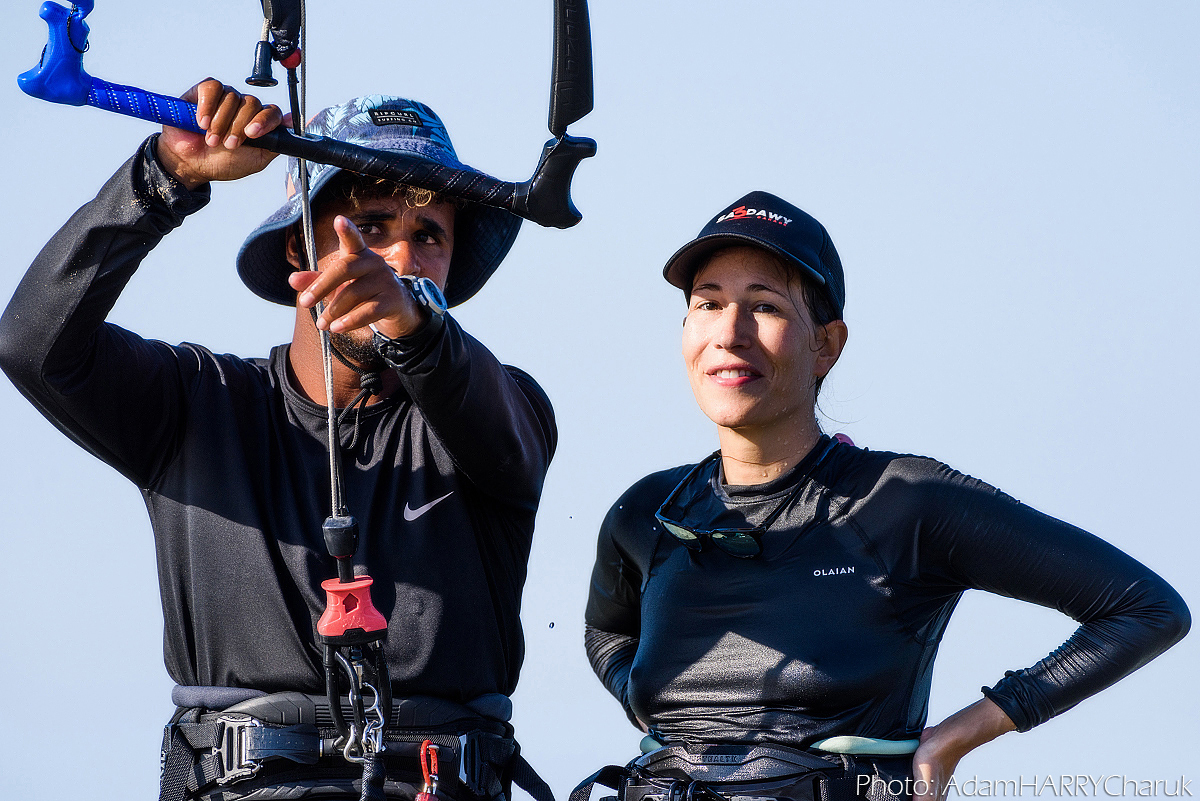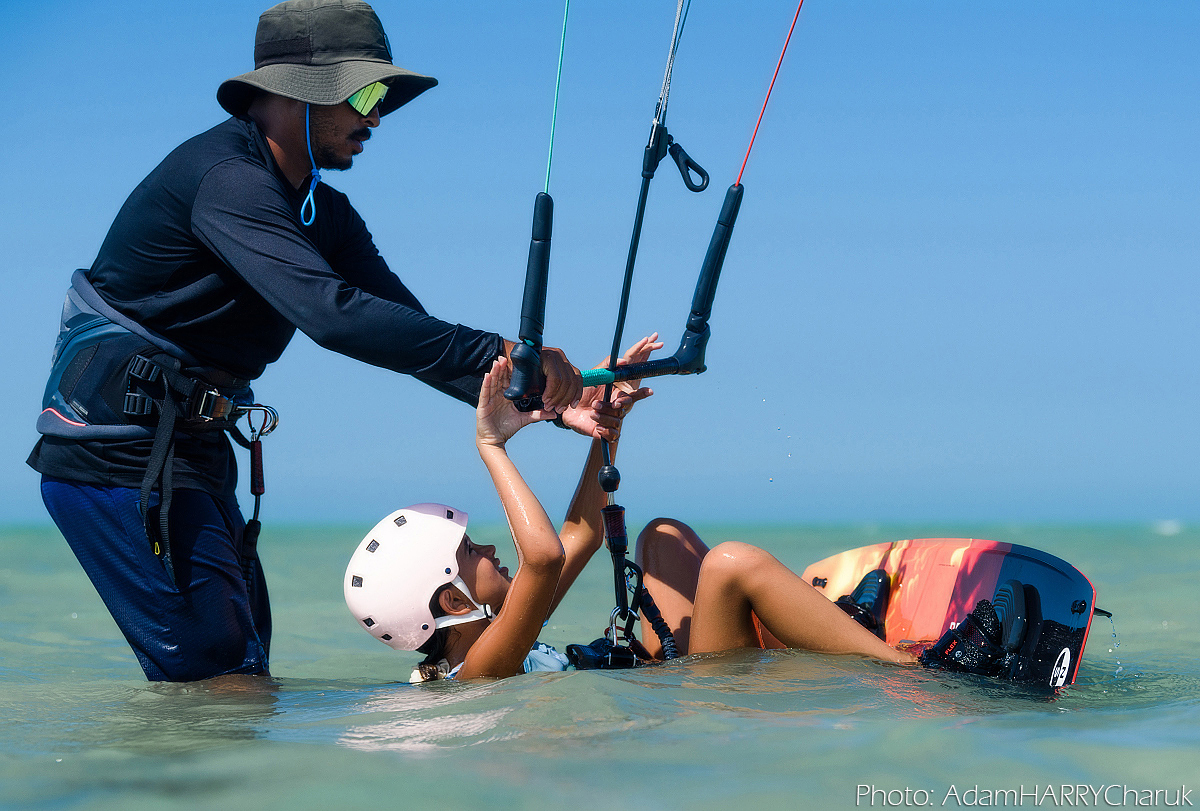If you’ve ever found yourself in a windy bay with kites in the sky, you might have found yourself aching to join them and wondering; “how long would that really take to learn?”. A unique mix of kite-flying and board-riding, with a healthy dose of sailing and surfing, kiting is a sport unlike anything else—and it’s easy to think it’s far harder to learn than it actually is!

The good news is that learning to kitesurf does not need to be difficult, and it doesn’t need to take a long time. In fact, with the right teacher, equipment, location and conditions, learning to kitesurf is surprisingly attainable and can be done in as little as a week! But what is learning to kitesurf?
When we teach kitesurfing, the aim is to get students to an independent level. This means they can set up their own equipment, launch their kite into the air and get into the water by themself. But they also need to be able to ride well enough that they can ride upwind in order to start and stop their session from the same spot on the beach.
So, how long does it all take—and how do you do it?
The time investment to learn to kite depends on a few factors. There’s individual athleticism, of course, and past experience with water sports. But these don’t have as much of an influence on your speed of learning as the most important two things; learning in a great location, and being taught by a great teacher.
On average, it takes our students between 10 and 20 hours of lessons to become independent kitesurfers. We’re able to get people riding by themselves so fast for two reasons. The first is because our lagoon in El Gouna is one of the best places to learn kitesurfing anywhere in the world. It’s flat, shallow and has some of the most consistent wind anywhere in the world. The second reason is we invest in trained, accredited and highly skilled teachers. Great instruction at a great location is the single fastest way to learn to kitesurf!
Bonus Tip: If you’re thinking about taking a kitesurfing holiday in June to learn to kite, check out our article on the best kitesurfing spots in June!
We’re not even going to mention how long it would take to teach yourself to kite, because kitesurfing can be dangerous, and learning to kitesurf without an experienced instructor is a sure way to get seriously injured. We don’t recommend it, and you’ll never hear any kiter or teacher recommending it either. Learning to kitesurf safely and easily is all about understanding risk, limiting or eliminating risk, and learning things in a logical progression.
The International Kitesurfing Organisation (IKO) has done great things to regulate kitesurfing, leading to better safety, Olympic representation and teachers with real, accredited training qualifications. This is great news for anyone interested in learning to kitesurf because it means you can study the lessons before you even take them, and start to understand exactly what your journey to independent kiteboarding will look like!
At Riah Kite Academy, we use the IKO methods to teach people to kitesurf, and our instructors are fully accredited, trained and insured. Here’s what learning to kitesurf should look like!
To kitesurf, you need a kite to fly, a bar and lines to control it, a harness to connect it to yourself, and a board to ride. The first lesson to learn to kite is understanding the gear required to do it. At Riah, we’ll teach you what each component is called, what it does and how to connect it all together. From inflating the kite, to connecting the lines and getting everything ready for launch, there’s a right way to do things—and we’ll make sure you know it.

We’ll also teach you wind theory. How the kite actually generates power, how to harness the wind and how to understand it. Our aim here isn’t to teach you absolutely everything about kite theory in one, off-water session, but instead to prime you for practical lessons later on with a good foundational understanding.
Time to get the kite in the air! Once the kite is set up and you’ve had a briefing on wind theory and general safety, we can launch the kite. In this part of the learning, you’ll learn where to stand to launch the kite into the air, and how to do it. This is a two-person job, you’ll need some to help hold the kite ready for flight before it goes up.
Learning to launch the kite, and fly it on the land, are essential kiteboarding skills. Learning to fly is obviously an important skill, but you’ll need to be able to safely launch, and fly it while walking into the water. A core focus here is about understanding the way a kite behaves; at what point it will fall, and how to move it to generate pull and power.

Before taking on the deep water and the board, you’ll also want to learn how to activate the quick release safety system to flag out the kite, what to do after that! This is called a self-rescue, and is a critical skill all kiteboarders need to learn.
Steps 1 and 2 are grouped by the IKO into Level 1: Discovery, and generally takes around 2 hours. However, at our excellent lagoon in El Gouna, we can often accelerate this part of the learning process because we can stand in the shallow water, and learn at a tailored pace.
Once you’re confident with the kite in the air and the bar in your hand, it’s time to learn to move yourself through the water with the power of the kite, and then get the board on your feet. This part of learning can be the most difficult—if the wind isn’t steady or there are waves, chop or currents, it’s easy to get washed around, lose the board and generally struggle.
At Riah, you won’t have that problem. There aren’t any currents, waves or chop in the lagoon, and the seabed gradually slopes into the sea, meaning there’s plenty of space to stand back up if you need to. With these conditions, you’ll be confident handling the kite, dragging yourself each way under kite power, and start learning to start on the board.

The IKO calls this Level 2: Intermediate, and estimates 4 hours to get comfortable getting into the water, body dragging with the kite, and taking off onto the board. Mastering this is the first major milestone of learning to kitesurf.
The final phase of learning to kitesurf is mastering the waterstart, learning to transition and refining your riding to finally head upwind. Before you’ve learned to ride upwind, the only way to get back to where you entered the water is to walk back. This is why learning to kite at crossshore and cross-onshore locations is so important. Beginner kitesurfers spend a lot of time drifting downwind, and walking back upwind. If the wind is offshore, you’re heading out to sea—better hope there’s a rescue boat on hand! With onshore wind, you don’t need to worry about a rescue—you won’t even make it off the beach!
At Riah, El Gouna’s lagoon is perfect. Cross-onshore wind gives you the most time to practice before you need to exit the water and walk, and a flat, smooth beach to walk back upwind in comfort.
This stage of learning, unsurprisingly called Level 3: Independent by the IKO, can take upwards of 8 hours depending on the factors we talked through earlier. Thankfully, a great location can make this phase not only much more enjoyable, but a lot shorter. Smooth, flat water makes going upwind, transitioning and water starting much easier, leading to faster progression and a more enjoyable experience!

All up, learning to kitesurf independently can take 14 hours, or even more. But, at a location like El Gouna in Egypt, we’re confident we can get that under 10. So if you’re ready to start your journey learning to kitesurf, download our Beginner’s Guide to Kitesurfing at Riah, or check out our kitesurfing lessons in El Gouna page!